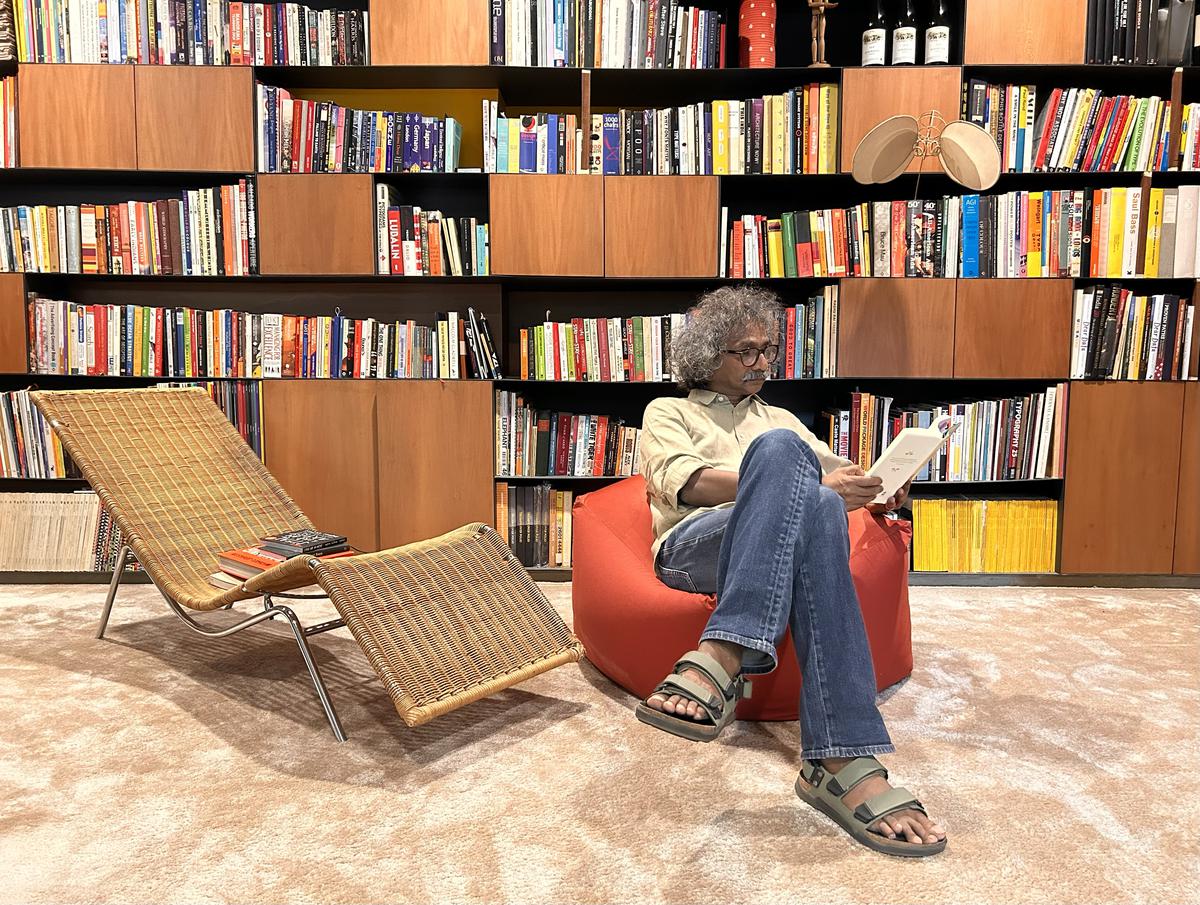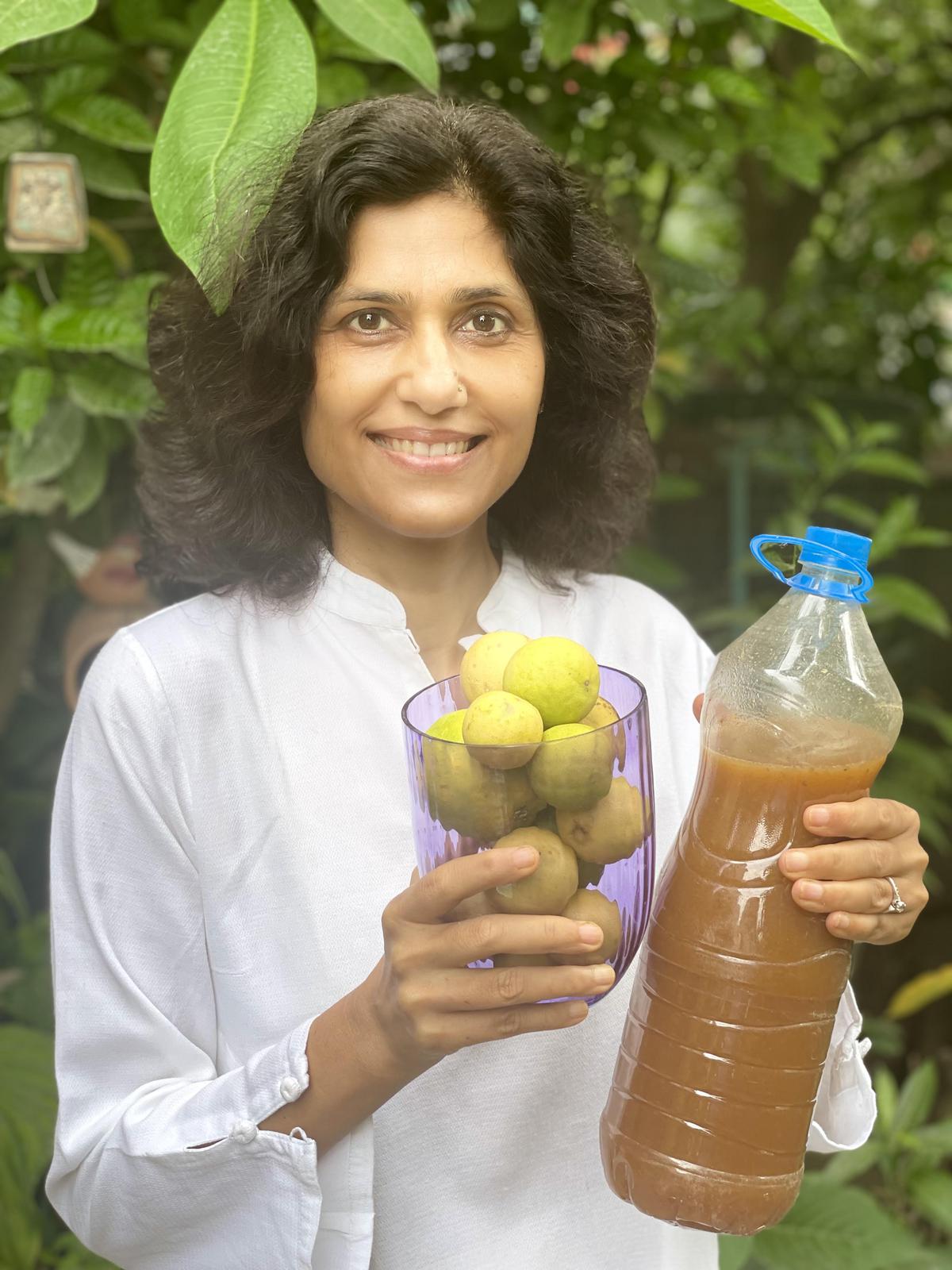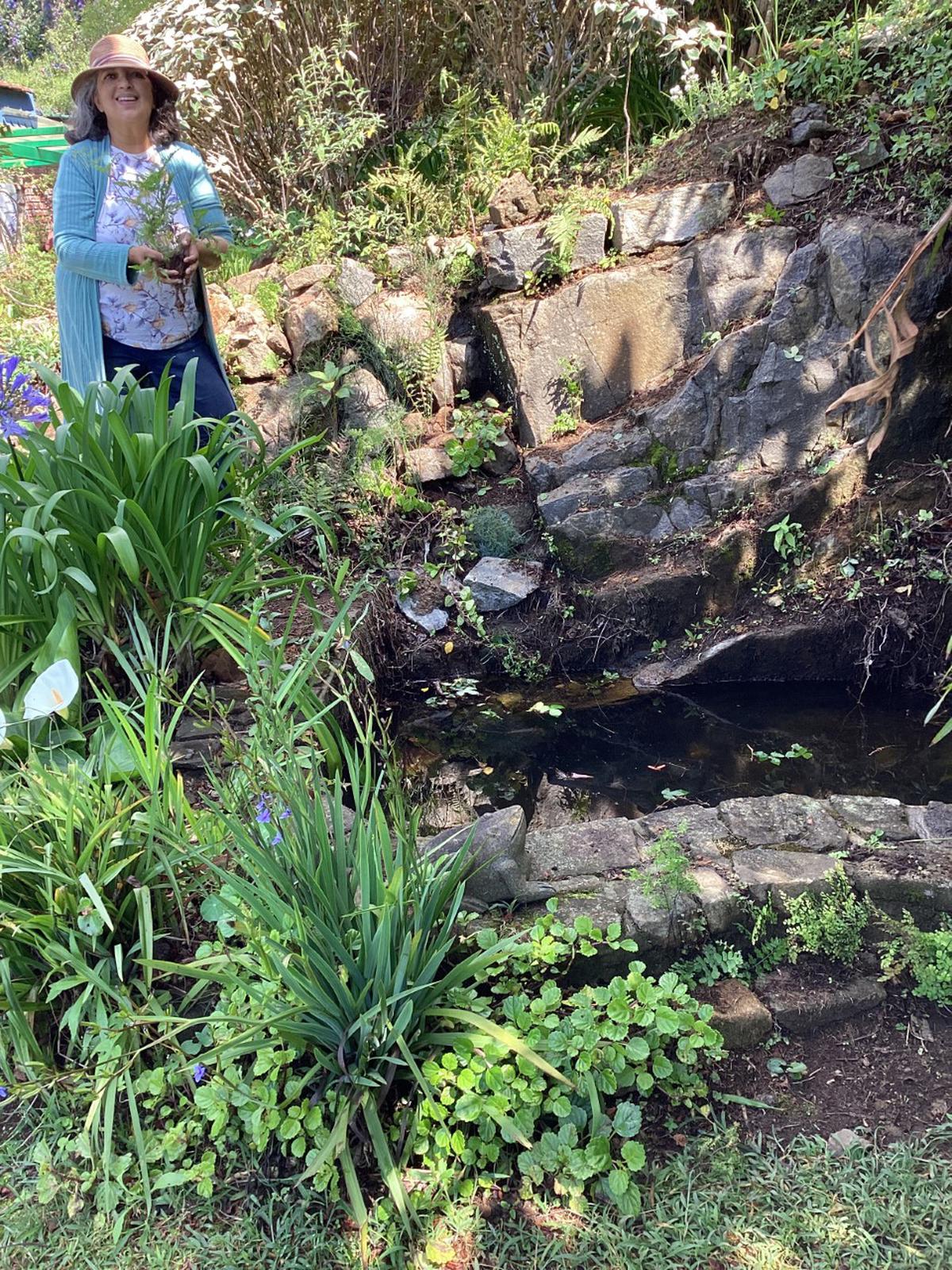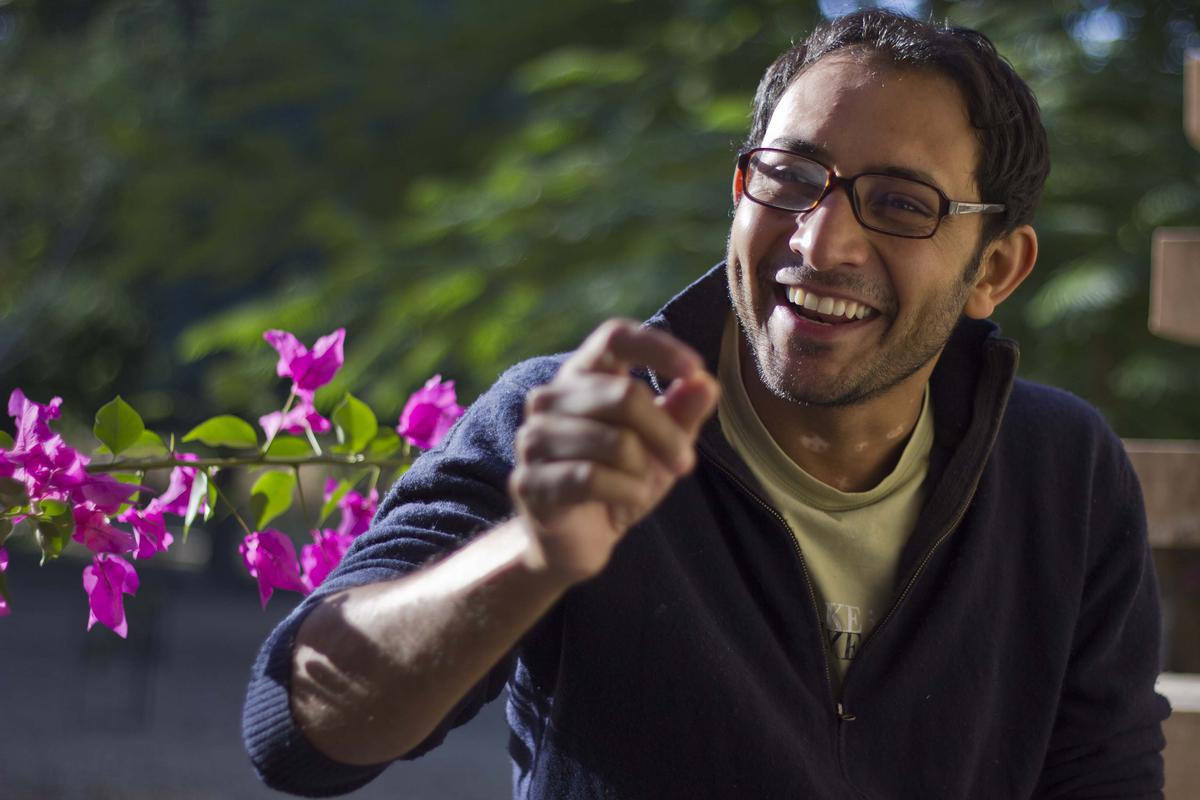The collaborative studio of designer Anthony Lopez. , photo credit: special arrangement
Not everyone wants to invest in summer home repairs or landscaping. But this season is also great for making small changes at home, for example little more than fixing a leaky tap or changing cushion covers. How about spreading some joy with a book nook, or creating a study and entertainment corner? Here are some suggestions to get you started.
Create a book nook at home: Anthony Lopez, Gurugram

Anthony Lopez | photo credit: special arrangement
Remember the plan to revive your reading habit? Start by creating one or several book nooks that go beyond the typical bed or living room couch. Summer sees ‘knowledge building’ as the go-to activity at designer Anthony Lopez’s home and studio in Gurugram. His studio houses an impressive reading collection, and the idea was to spread the library’s books over two floors of the open layout. The seating areas were made more inviting by adding comfortable cushions and bean bags. Now you’ll find a book at every turn: many open, tempting you along stairways, landings, tables, ledges, and window seats. Another summer tradition at this collaborative studio is that each member takes a turn to dash off an innovative ‘summer cooler’ in the form of a reading treat. Think Watermelon-Mint or Mango and Ice Cream Shake!
Introduction to colors and fragrances: Geetha Rajagopalan, Chennai

Geeta Rajagopalan | photo credit: special arrangement
Feng Shui expert Gita Rajagopalan’s answer to the summer heat is simple. “I cover all my windows with thick dark shades, an extra layer behind the curtains.” Geeta’s flat, which sits in the southwest, should normally get very hot. Still, it’s surprisingly good. She keeps her windows open for air till 11.30 am and then closes them. A row of plants on the west-facing verandah provides an additional buffer. The air-conditioning is only on for a few hours. These simple adjustments dissipate heat and maintain an even temperature. Another suggestion from Geeta is to use light colors everywhere, like white sheets and pillow covers. “It is essential to keep the house clutter free and spotlessly clean.” Lastly, she recommends using diffusers with light perfumes as their gentle scents pervade the air and bring about a sense of overall well-being.
Switch To Eco-Friendly Clean Up: Monika Khanna Gulati, NCR

Monika Khanna Gulati | photo credit: special arrangement
Monika Khanna Gulati from NCR Waste Matters is emphatic about the need to recharge our hungry soil with organic manure and revive its nutritive value. Even if we live in apartments, going beyond our homes and rejuvenating the soil in our neighborhood is the greatest reward as it will bring alive greenery and cool down our environment. Monica’s special project for every summer is making bio-enzymes from lemon and pineapple peels. ‘It’s great for repelling pests, doesn’t cause allergies, and a great washing ingredient that naturally brightens your whites! Bio-enzymes are being used to bring ponds and rivers back to life, so when we use them to wash our clothes or dishes, they go back into the sewage system, cleaning it. ” To make your own bio-enzyme, take the rind of your waste lemon and grind it with water. Add jaggery, and stir it every day so that the gas gets released after fermentation. In three months, your enzymes are ready to use.
Make Your Own Bioenzyme Citrus Cleaner
(ratio is 1:3:10)
Component: 100 grams of jaggery/ Good300 grams of citrus peels (orange, sweet lime, lime, pineapple. Wash the peels once, and if possible blend in a blender), 1 liter of water.
Method: Mix all three in a two liter PET bottle or any plastic container with a lid. (Lid is needed to keep insects out). Please put a sticker with the date on the bottle so that you remember when you started. Keep in cool dark place. Keep stirring every day so that the gas can escape. Open it at least once a day for the first month. It is ready in three months when it stops releasing gas and you can see the peel turning into pulp. Filter the clear liquid and store in a plastic bottle. The pulp can also be used to add peels to the next lot to serve as an accelerator.
Use: 1. Accelerator in composting or bio-digester process. 2. Ceramic, steel surface grease and grime remover (bathroom or chimney cleaning) 3. Toilet cleaner, tile cleaner, removes clothing stains; Use by diluting 1:10 with water on heavily soiled clothing.
Plan a Fernry: Lathika Gorge, Kodaikanal

Lathika George in her garden. , photo credit: David Prince
This summer, author and landscape designer Latika George plans to set up a fernery in a shaded corner of her garden in Kodaikanal, near a pond, which is a favorite reading spot. “I can already imagine the magical place it’s soon going to be.” Sheltered by a rocky outcropping, the space receives filtered sunlight—ideal growing conditions for most fern species. Water flows into the pond throughout the year through cracks in the rocks, keeping the soil moist. Lathika seeks to replant endemic ferns like maidenhair ( adiantum) and eagle fern ( pteridium aquilinum), which grow wild in his garden. “My botanist friend Lakshmi also recommended whisk fern ( silotum nudum) And ophioglossum, which will add a pop of color as they bloom. Mossy fronds of Lycopodium and hardy wood ferns will be forced to grow in the gaps of the rock face. a tree fern ( cyathia crinita), which can grow up to six feet tall, will add stature to a landscape design.
Watch the roses bloom: Loulou Van Damme, Kodaikanal
Loulu Isla Van Dam at her British cottage near Kodaikanal. , photo credit: R Ashok
Designer and hotelier, Loulu Van Dam is excited to get hands-on in the garden at her Palani Hills home. His simple trick for getting roses to bloom profusely is to feed them with nutrient-rich water and banana waste pulp. To start, soak the banana peels in a tub of water. After a week, the water turns black and the peel rots. Banana peels are rich in phosphorus and manganese – nutrients that plants love. “It’s like a miracle! My roses are looking great,” says Loulou, who is also into vermiculture. In his garden, he has constructed a brick and cement box with a lid about 4 feet x 4 feet, and 4.5 feet high. A water-filled ridge around the base acts as a moat, preventing ants from entering. Inside, on top of a layer of rocks and dry leaves, she composts using worms, specially sourced from an organic bio-culture specialist in Goa. “They propagate so fast, it’s fascinating. Sifting makes wonderful compost. Once I’ve removed the ‘black gold’ I add semi-dried cow dung to feed the worms. Vermiculture anywhere Can be done, in a dustbin on your terrace, even if you do not have a big garden.You can use kitchen waste instead of cow dung.
Put up a smart wall: Rahul Sen, Delhi

Rahul Sen | photo credit: Sensen Design
Delhi-based architect Rahul Sen transformed an awkward space in the guest bedroom of a Gurgaon flat into a customized entertainment center cum workspace. The 9” space under the beam and between the columns was wasted, so the designer decided to make the space functional. Now, the wall houses a bookshelf, a television screen, and all the gadgets for a home entertainment center. Situated next to a window, this cozy spot was ideal for an 18” deep laptop ledge. Rahul notes that children are often trapped in their bedroom in a flat, and this set-up encouraged the young girl in the family to seek a secluded space. The compact laptop table features integrated lighting. The whole arrangement evokes the beauty of smart technology, flat screens, laptops and slim gadgets. Family members who work from home also use the wall for media streaming and video conferencing.
The author is a brand strategist with a background in design from SAIC and NID.